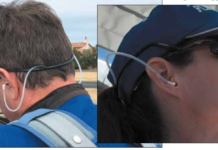FlightPrep Retort
Id like to clarify a couple of points in The Aviation Consumers review of online flight planners in an otherwise excellent article. While the article was generally complimentary of our product, it left the mixed impression that except for price, FlightPrep and our competitor were pretty much the same in terms of features.
Although the author mentioned some of the differences in the review, she came to the conclusion that she really did not have a strong preference. Im not sure whether she appreciated some of the differences. Actually, FlightPrep and our competitor are quite different. While our competitor is a static Web page flight planner-charts are a fixed static size-FlightPrep was designed with the look and feel of traditional desk-top flight planners. Consequently, FlightPrep has dynamic chart manipulation, such as re-scaling, rubberband routing, split charts, wide zoom ranges and repositioning.
Moreover, FlightPrep delivers interactive stop-over planning, weight and balance, vector-drawn relief maps and a host of other features not found on our competitors products. Weve done our utmost to distinguish ourselves from the competition with unique and useful features and performance demanded by pilots. As a result…we have filed for patent protection on these innovations and expect a patent to be issued shortly.
With regard to price and value, I thought this was a legitimate criticism. Accordingly, we no longer charge the one time set-up charge, but continue to offer a free trial version to pilots wishing to try FlightPrep.
Furthermore, we have now integrated FlightPrep ChartCase into a full-feature online and offline planner and Electronic Flight Bag, delivering all the flight planning, weather, approach plates, enroute charts, sectional charts and WAC charts for one low cost price of $109.95 for the initial purchase price, or for a 28-day update of $229.95 per year.
What this really means is that our customers wont have to buy multiple products for their flight planning and chart product needs.
-Roger M. Stenbock
Vice-president/marketing
www.FlightPrep.com
———-
Traffic Detectors
Reference your review of the traffic detectors in the April, 2004 issue: My purchase of a Monroy ATD-200 was based entirely on the March, 2002 Aviation Consumer review of these devices. Since then, I have operated an ATD-200 for several years and about 500 hours and was quite happy with it.
It does one thing reasonably well: warn me of some traffic. Its a great value, as is the ATD-300. Monroy has been good with product support.
My Monroy is installed with an external antenna on the low side of my Barons nose. The new ATD-300 has been installed for 30 hours or so.
I really do like the improved look-up or look-down guidance that the new Monroy ATD-300 gives on its relative altitude display and also appreciate the rarely-seen LOW VOLTAGE aural and visual warning running in the background and alerting these rare events. I even like the ladys voice better! It is indeed an improved product.
But in my estimation, Monroy got a bit too cute on some of the new features, several of which are quite objectionable. Ill be doggoned if it makes any sense to me to present a nearly full-time display of a distracting and irrelevant pressure altitude-almost never the same as indicated altitude-and an occasional display of normal buss voltage or the ATC code we are transmitting. An annunciator with nothing to say ought to say nothing. A traffic annunciator should be dark unless there is traffic. There is no way to defeat either display. Even worse, the idea of correcting a poor software design with an unrequested ident transmission is just absurd, in my opinion. If the software is confused about altitudes, then fix the software.
There is no point in intruding upon ATC with unrequested idents. There is no way an STC will be granted with this design defect, in my view. I concur with your desire for a mute option that doesnt change the display.
-Fred W. Scott, Jr.
North Garden, Virginia
We forwarded Fred Scotts complaint to Jose Monroy. Here is his reply:
The purpose of displaying pressure altitude is to provide an integrity check for the ATD-300 and the transponder. A blank display could either mean no traffic or a bad unit. Also, many of the new transponders display pressure altitude all the time and this does not appear to bother pilots.
The voltage warning/indication feature is obvious, specially when you have an old airplane with just an ammeter. The voltage reading provides an integrity check and a crosscheck with the ammeter or voltmeter in the aircraft. The voice warning alerts you to take action before you have a dead battery, something that ammeter will not do. This function being included in the ATD-300 saves the owner adding another instrument where there may be no panel space for it.
The probability of being assigned a squawk code requiring an ident for the ATD-300 is 7.8 percent (319 altitude codes/4096 squawk codes). These codes are usually assigned in high-density environments and usually the controller will ask you to ident anyway.
An unrequested ident is not an issue for the controller. Hundreds of unrequested idents are received daily. The ATD-300s ident feature also lets you confirm that your transponder ident function is working and that the proper code is being sent out. The mute mode changes to MSL altitude reading to allow the pilot to see traffic beyond the warning envelope. This feature is useful for parachute jumping operations. It is integrated with the mute mode due to the unit limitations of having only one mode switch. Normally, in practice, mute is enabled on the ground where mid-air incidents are very rare.




